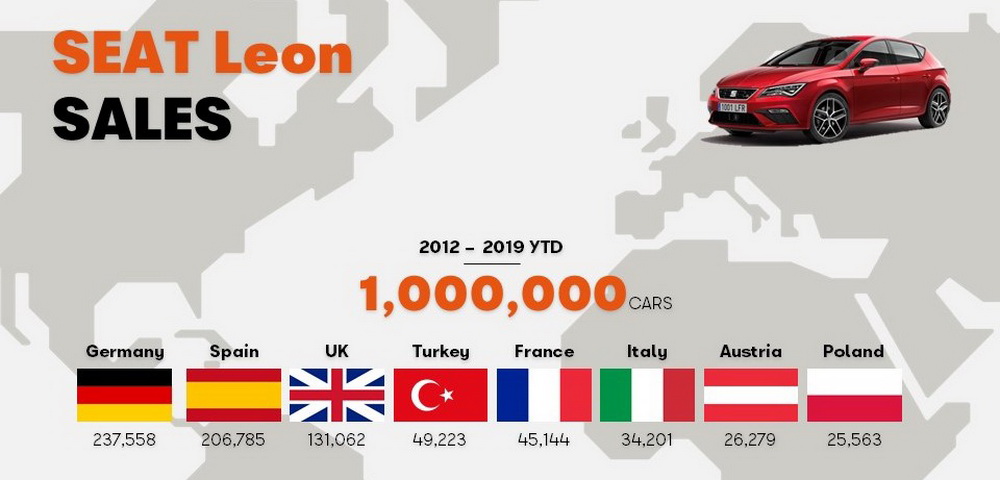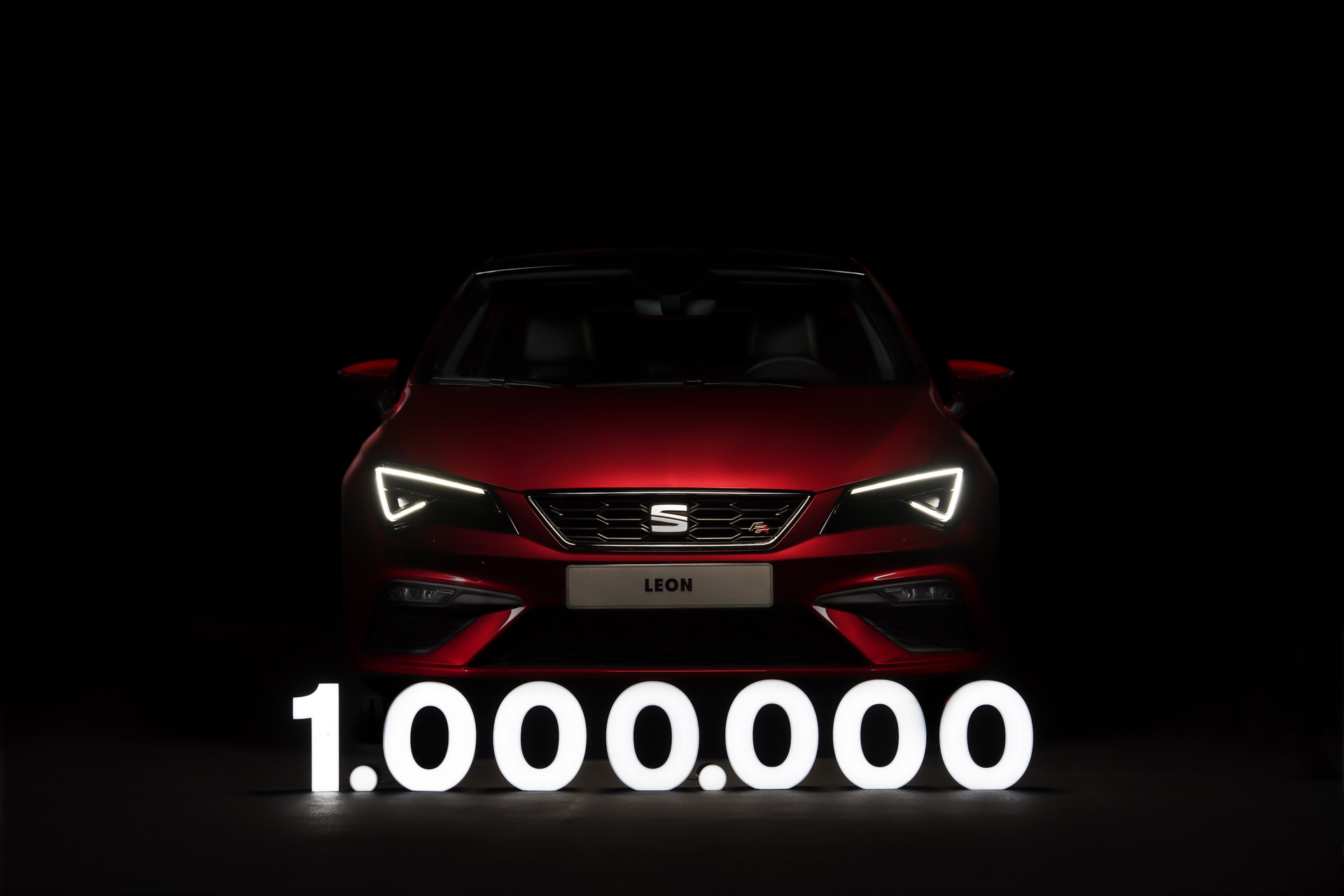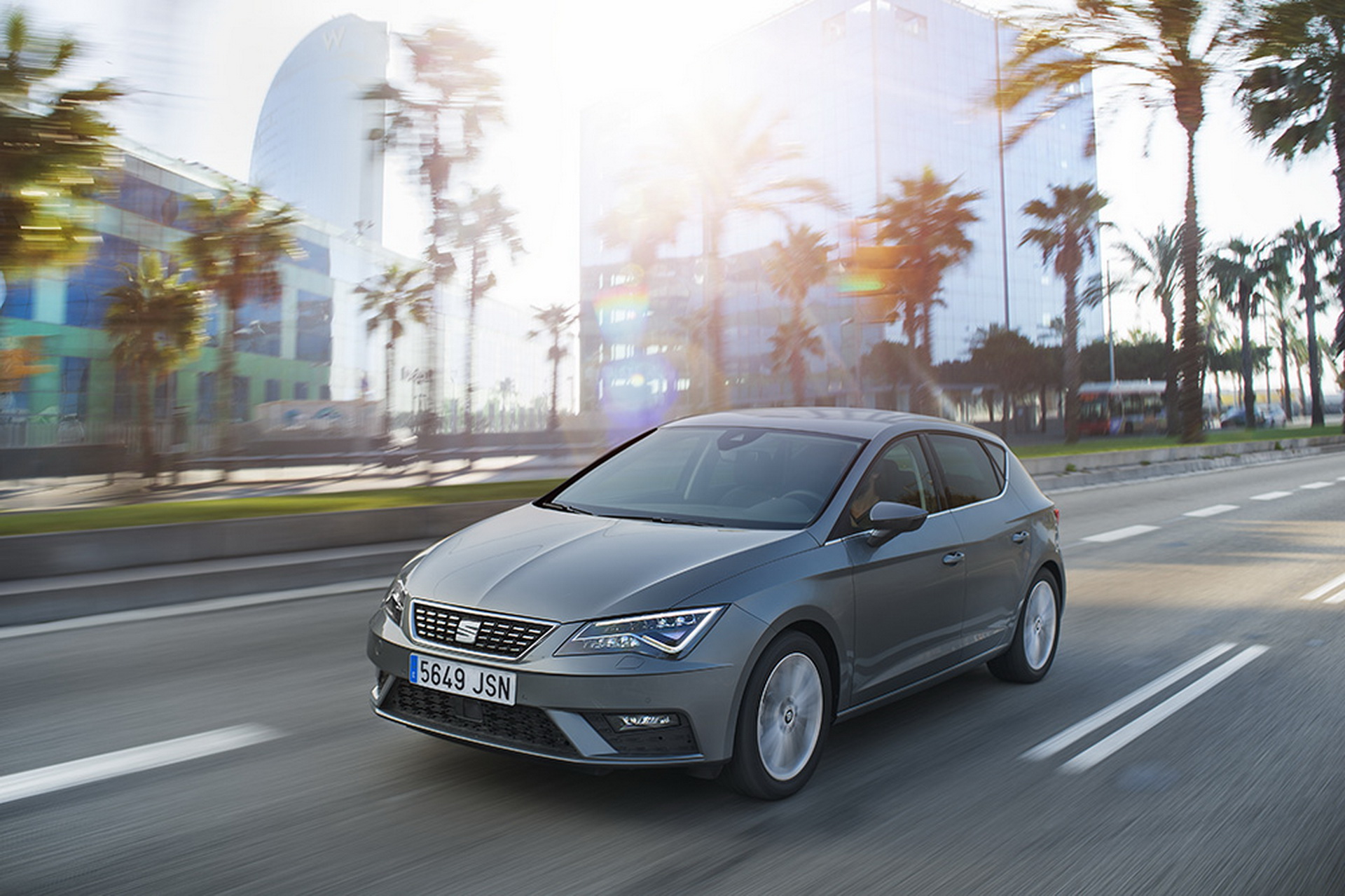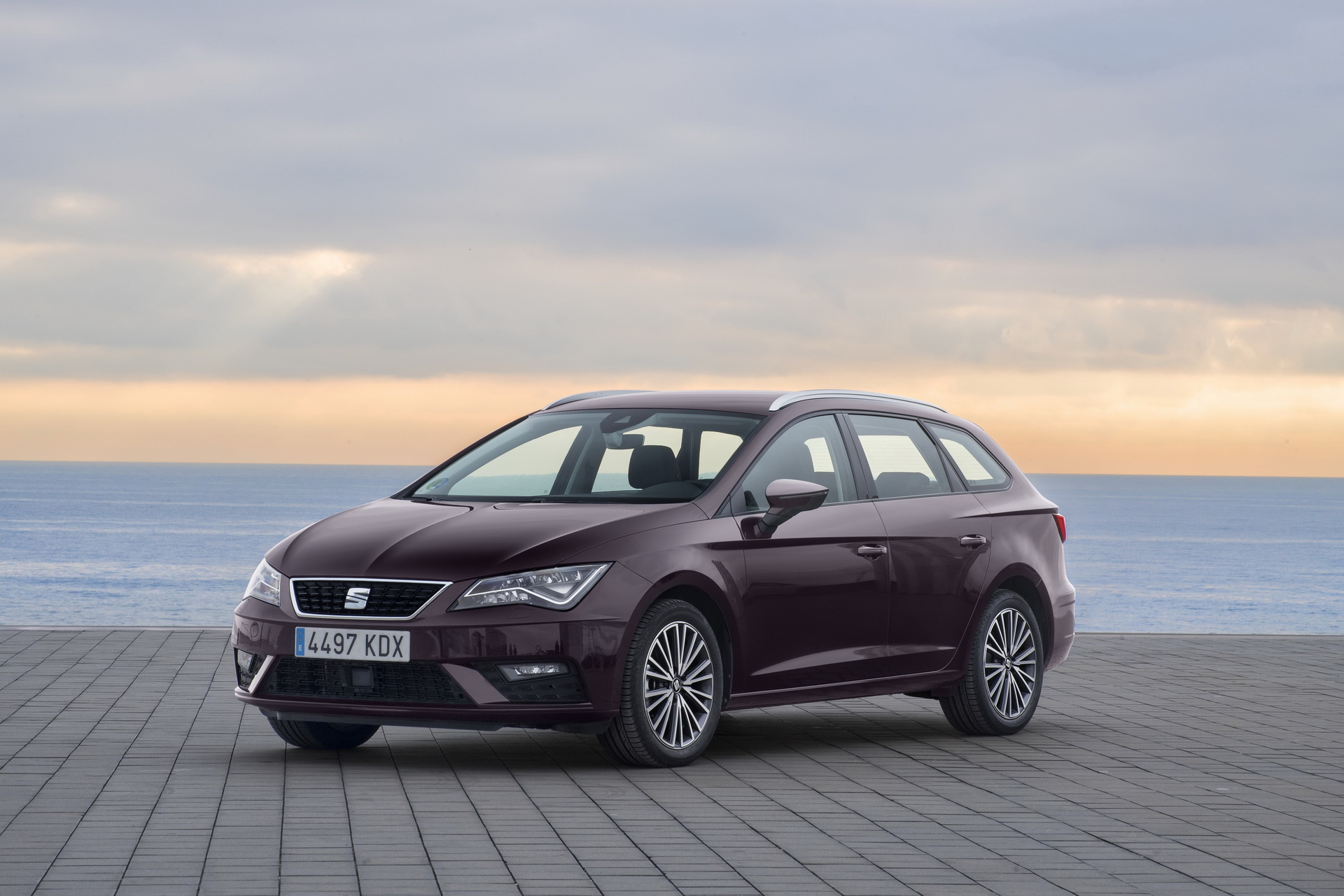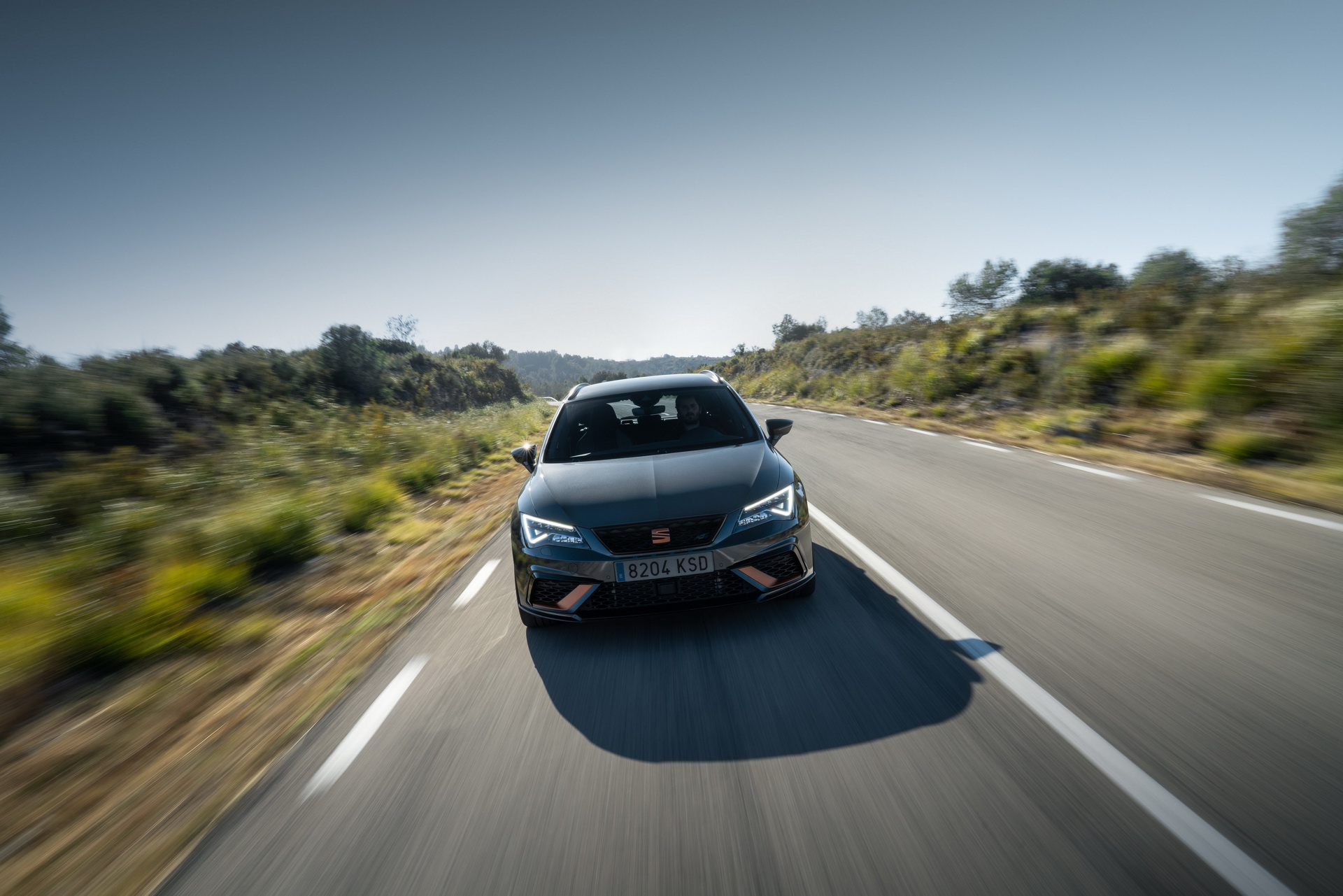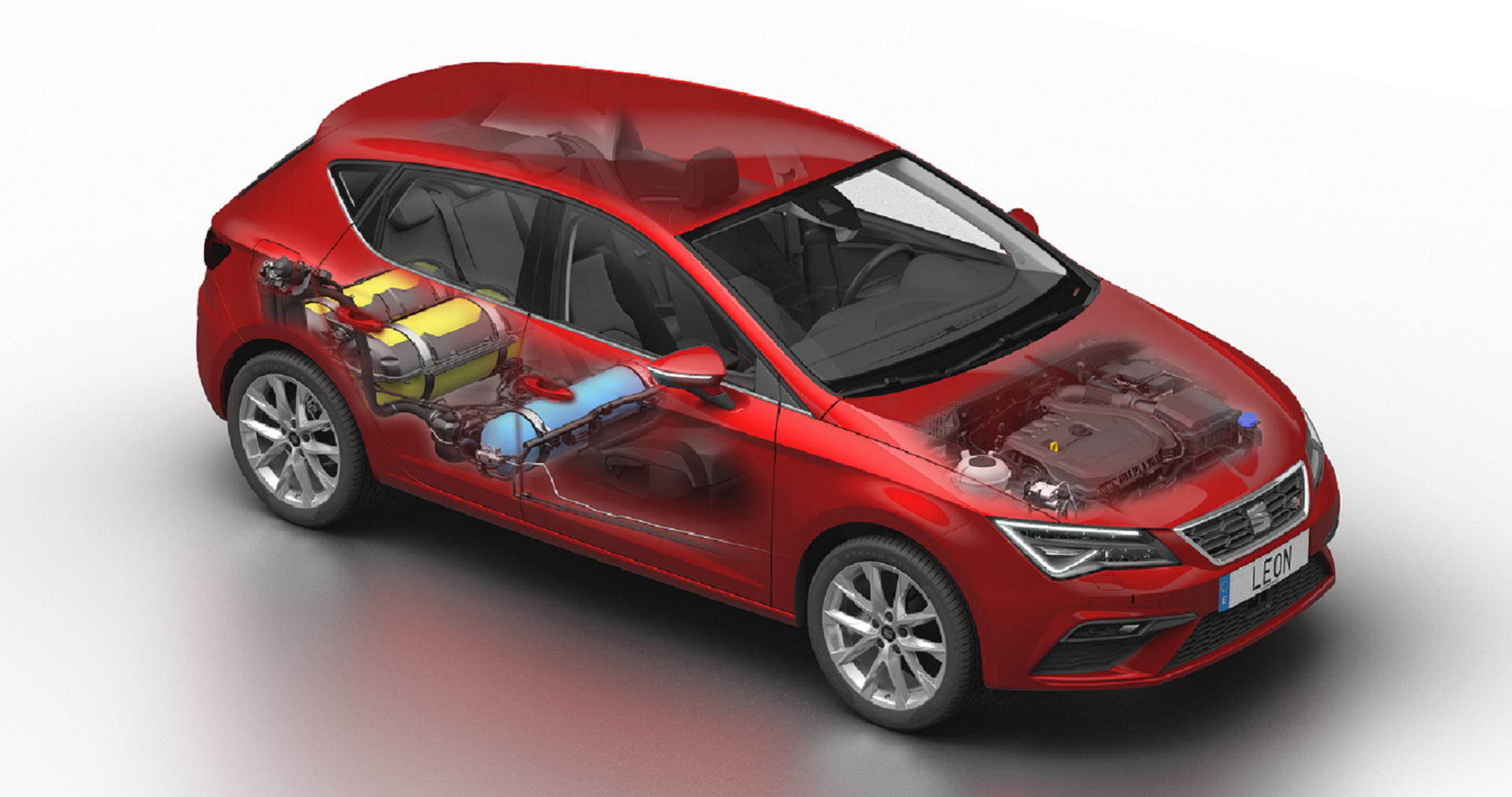To say that the Leon has been a huge hit for Seat would be an understatement; after all, it’s become the brand’s best-selling model and the first to take over the number one spot held by the Ibiza for the past 30 years.
The third-generation Leon is now celebrating an important landmark, as it has achieved 1,000,000 deliveries since its launch in 2012.
The Spanish cousin of the Golf has been designed, developed and produced in the company’s Martorell factory and is underpinned by the VW Group’s modular MQB architecture.
Also Read: 2020 Seat Leon Shows Uncovered Interior For The First Time
“The most prominent aspect of this third generation of the Seat Leon is the wide acceptance that it still has in the market, even after seven years,” said Wayne Griffiths, Seat VP for sales and marketing. “In 2017, the current generation of the Leon achieved its record with 170,000 cars sold and now in 2019, we are still confident that it will maintain its volume at a high level close to this figure.”
The current Seat Leon played a crucial role in turning Spanish brand around. Back in 2012, Seat lost 149 million euros ($165 million at current exchange rates) – six years later, in 2018, it had its best ever results in its history, achieving a profit of 294 million euros ($327 million) after tax.
Key markets include Germany and the UK, where Seat saw its deliveries go up by close to 70 and 60 percent respectively since 2012, with the Leon firmly on top of its sales charts. One out of every four cars Seat sold in the first quarter of 2019 is a Leon, while Spain remains the number two market of the compact model worldwide.
In total, Seat has delivered 2,210,712 examples of the Leon throughout its three generations: the original sold 534,797 units, the second generation 675,915 and the current iteration just crossed the 1 million mark.
Although Europe is still its main focus, Seat offers the Leon on all five continents in countries like Mexico, Morocco, Singapore and New Zealand.





